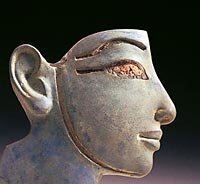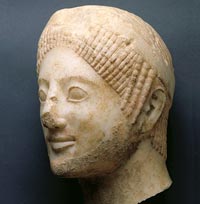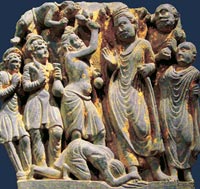 |
 |
|
|
This exhibition brings
together over one hundred “smiles” from the early Mesopotamian dynasty
to Japan’s Edo period, covering a period of four millennia. While
dealing with the destructiveness of nature and the austerity of the
gods, humans have earnestly aspired to and shown adoration to the gods,
who brought them to life and blessed them with nature, and also to the
buddhas, who showed them compassion. Come see the “archaic smile” that
reflects the prayers of these people. |
 |
The ancients of West Asia created figurines modeled after themselves as
their substitutes, which they offered in their sanctuaries. The tightly
bound hands in front of the chest represent the strength of their prayer
for which they risked their lives in serving the gods. |
|
The Egyptian kings and queens were believed to be manifestations of the
gods and thus embodied the cosmic order. The deluge of the Nile, which
was controlled by this order, promised abundant harvests. Graceful
smiles are seen on the images of the kings and queens and of the gods
that represent this nurturing nature. |
 |
|
 |
||
|
For the Greeks, wooden and stone statues of their divinities, called
agalma (joy, smile), were actually living gods. The nobility created
statues in their own image, which they offered to the gods, but today
many of these cannot be differentiated from statues of the gods
themselves. |
 |
|
 |
Mahayana Buddhism flourished during the Kushan dynasty, which prospered
from Silk Road trade. Images of Buddhas, which had not been created
until then, appeared during this period. In Gandhara, the influences of
Hellenistic and Roman art took root and the smiles on matured
expressions of transcendent buddhas, compassionate bodhisattvas, and
joyful devotees were produced. |
|
When Buddhist stupas were first constructed in India, images of divine
beings and humans that adorned these structures were expressionless.
Although the influence of Gandharan exchange is not certain, the statues
of buddhas and gods that appeared later in Mathura in central India
clearly have smiles. |
 |
|